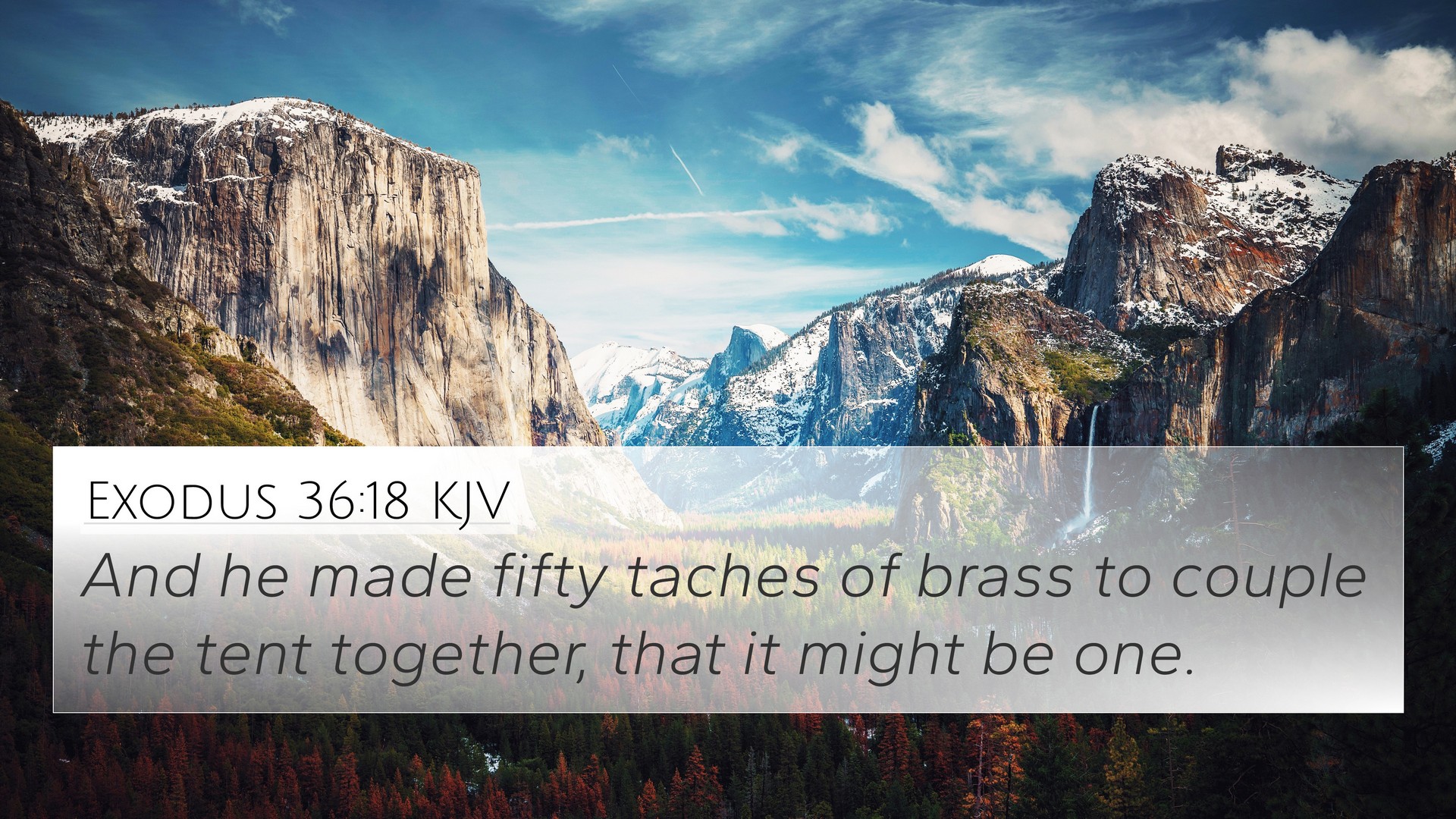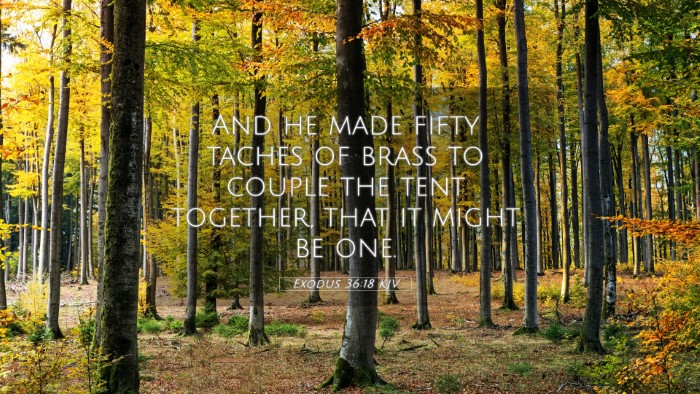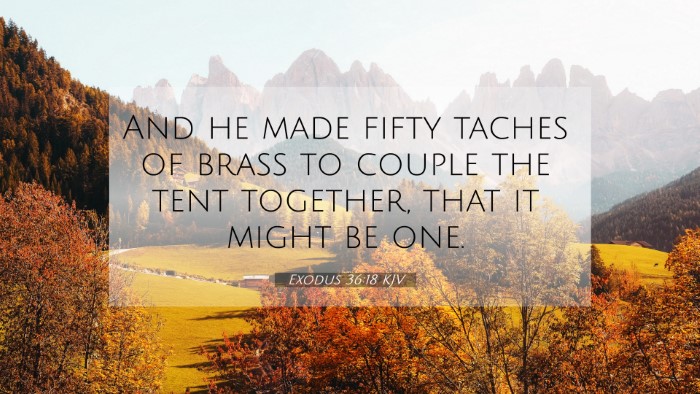Understanding Exodus 36:18
Exodus 36:18 states: "And he made two cherubim of gold; of beaten work made he them, and set them on the two ends of the mercy seat." This verse describes the creation of the cherubim that were placed on the mercy seat of the Ark of the Covenant. These figures are deeply symbolic and play a crucial role in the understanding of God's presence among His people.
Verse Context and Significance
The context of Exodus 36 involves the instructions given by God to Moses regarding the construction of the tabernacle, which was to be a dwelling place for God among His people (Exodus 25:8). The cherubim are often seen as guardians of God's holiness and serve as a reminder of the divine presence.
Insights from Commentaries
-
Matthew Henry:
Henry emphasizes the symbolic nature of the cherubim as protectors of the holy presence of God. They are not just ornamental but serve a purpose in representing the glory of God and His majesty. Their placement on the mercy seat indicates the close relationship between God and His people, where mercy and justice meet.
-
Albert Barnes:
Barnes reflects on the meticulous craftsmanship that went into the making of the cherubim, illustrating how serious the Israelites took their worship and the construction of the tabernacle. He also notes the significance of gold as a representation of divinity and purity.
-
Adam Clarke:
Clarke connects these cherubim to their representation throughout Scripture, suggesting that they symbolize the presence and protection of God. He also points out the relation to earlier biblical texts where similar imagery appears, laying a foundation for understanding their role throughout the biblical narrative.
Cross-References
Exodus 36:18 connects with several important Bible verses that enhance its understanding:
- Exodus 25:18-20: Details God's instructions for the guardian cherubim.
- 1 Chronicles 28:18: Highlights the significance of the cherubim in Solomon's temple construction.
- Hebrews 9:5: Refers to the cherubim overshadowing the mercy seat, linking Old and New Testament themes.
- Ezekiel 10:1-2: Describes the vision of cherubim, offering deeper insight into their heavenly presence.
- Isaiah 37:16: Mentions the Lord sitting between the cherubim, emphasizing divine rule and sovereignty.
- Revelation 4:6-8: Includes living creatures similar to cherubim, illustrating their continued role in worship and praise.
- Genesis 3:24: Discusses cherubim guarding the way to the tree of life, symbolizing God's protection and holiness.
Thematic Connections
The themes of the holiness of God, mercy, and divine presence are prevalent throughout Scripture. The cherubim highlight the delicate balance between God's majesty and His grace:
- Holiness of God: The cherubim serve as a visual representation of God’s holiness (Isaiah 6:2).
- Divine Mercy: Located above the mercy seat, they symbolize God's willingness to extend mercy to humanity (Romans 3:25).
- Worship and Praise: The role of cherubim in heavenly worship parallels their function in the tabernacle (Revelation 5:11-12).
Using Bible Cross-References
For a deeper understanding of Exodus 36:18, employing tools for Bible cross-referencing is essential. These tools assist in identifying connections between verses and themes. Resources such as a bible concordance or a bible cross-reference guide can be immensely helpful. By examining these inter-Biblical dialogues, readers can uncover profound insights into the nature of God and His covenant relationship with His people.
Practical Applications
Recognizing the significance of cherubim in Exodus 36:18 can lead to enriching personal study and sermon preparation. Understanding the design and purpose of these heavenly beings encourages believers to reflect on God’s holiness and mercy in their lives. Furthermore, employing a bible cross-reference system promotes a greater appreciation for the biblical narrative as a cohesive story of redemption and divine presence.
Conclusion
In summary, Exodus 36:18 invites exploration of the symbolism and significance of the cherubim within the broader biblical narrative. By engaging with various commentaries and cross-referencing relevant scripture, readers can gain a richer understanding of God's communication through these vivid images and themes of holiness, mercy, and divine protection.


